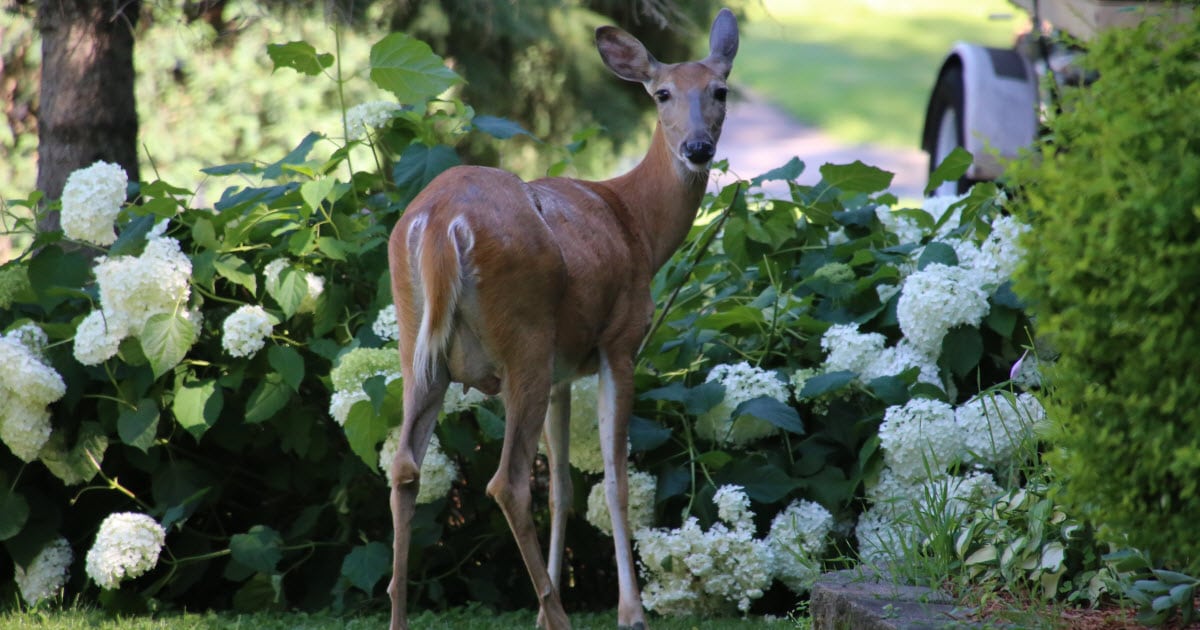

Blooming Beauties: Hydrangeas and Rhododendrons in Fall
Two of deer’s favorite plants to eat, hydrangeas and rhododendrons, are in bloom now! Contrary to popular belief, these plants bloom not only during the spring and summer, but also during the fall! Fall-blooming or late-season varieties have evolved to bloom later in the year. It is essential to protect these blooms with all-natural deer repellents, as deer are feeding heavily in an attempt to bulk up their fat stores in preparation for the winter months ahead.
Time to Shine
As temperatures start to drop and the days gradually shorten, it signals to certain hydrangea and rhododendron varieties that it’s time to bloom. The combination of cooler temperatures and diminishing daylight hours serves as a trigger for the development of flower buds. Fall-blooming hydrangeas and rhododendrons also play a crucial role in supporting pollinators as they prepare for winter. Bees and other insects still require nectar and pollen sources during the autumn months, and these late-blooming plants provide sustenance when it’s needed most. By attracting pollinators, these shrubs will indirectly contribute to the ecological health of your garden!
Why do Deer Love Hydrangeas & Rhododendrons So Much?
One of the primary reasons why deer are irresistibly drawn to hydrangeas and rhododendrons is the alluring scent emitted by these plants when they’re in bloom. These fragrant blooms release an enticing aroma that deer can smell from miles away. Deer are not just attracted to the scent of these beautiful flowers; they also seek out the nutritional benefits they provide. Hydrangeas and rhododendrons contain a variety of nutrients and compounds that can be beneficial to deer, typically found in the leaves of these plants. Another reason why deer tend to gravitate towards hydrangeas and rhododendrons is the sheer abundance of blooms these plants produce. These plants can be prolific when it comes to flowering, and a single shrub can boast dozens, if not hundreds, of flowers. This makes them an irresistible buffet for deer searching for a quick and easy meal.
The timing of the blooming season for hydrangeas and rhododendrons also coincides with the time of year when deer are actively searching for fresh food sources. In spring and early summer, deer are often in need of nourishment after the harsh winter months. This makes the delectable blooms of hydrangeas and rhododendrons particularly appealing.
Deer have relatively few natural predators in suburban and urban areas, which means they can freely browse gardens without fear of being hunted. This lack of natural predators can lead to deer developing a taste for garden plants, including hydrangeas and rhododendrons.
How can I protect my Hydrangeas and Rhododendrons from deer feeding?
Many people invest money, time and effort in cultivating these plants. As these late-season hydrangeas and rhododendrons bloom, it’s essential to protect them from the ever-present threat of hungry deer. Deer can be particularly active during the fall as they forage for food to prepare for the upcoming winter, when food sources will become more scarce. To ensure your plants remain untouched, consider using All-Natural Deer Control from ohDEER. Our Deer Clear solution is free of chemicals and does not harm the deer in any way. They do not like the smell and taste of plants sprayed with this solution, and will resort to looking elsewhere for food. Some other effective and natural strategies for deterring deer away from your plants include planting deer-resistant plants on either side of your hydrangeas and rhododendrons to divert their attention, installing fencing around the plants to create a physical barrier, or pruning your plants strategically to remove lower branches, making it less convenient for deer to reach the blooms.
Also, check out our guide to Protecting New Blooms from Becoming Deer Food.